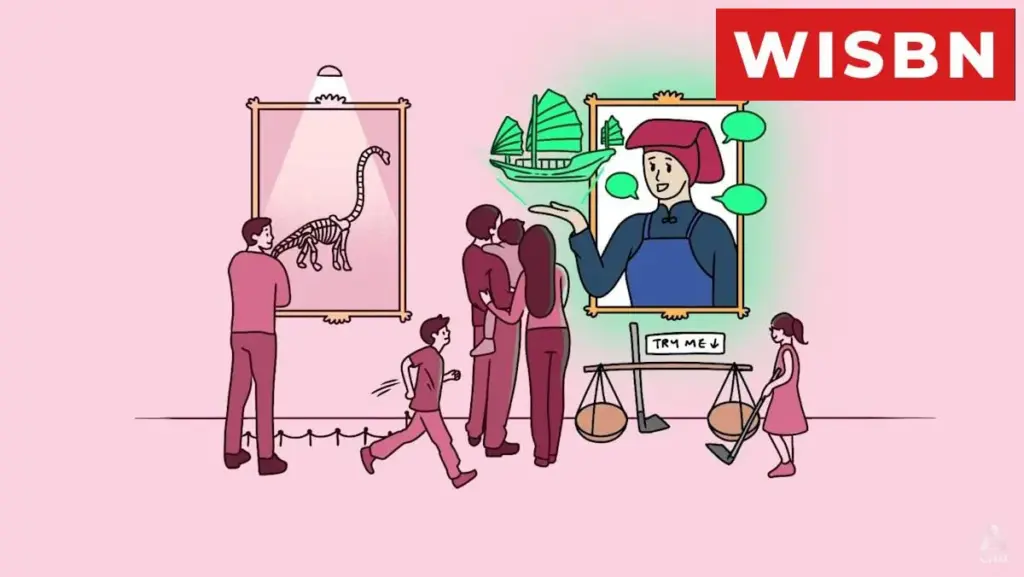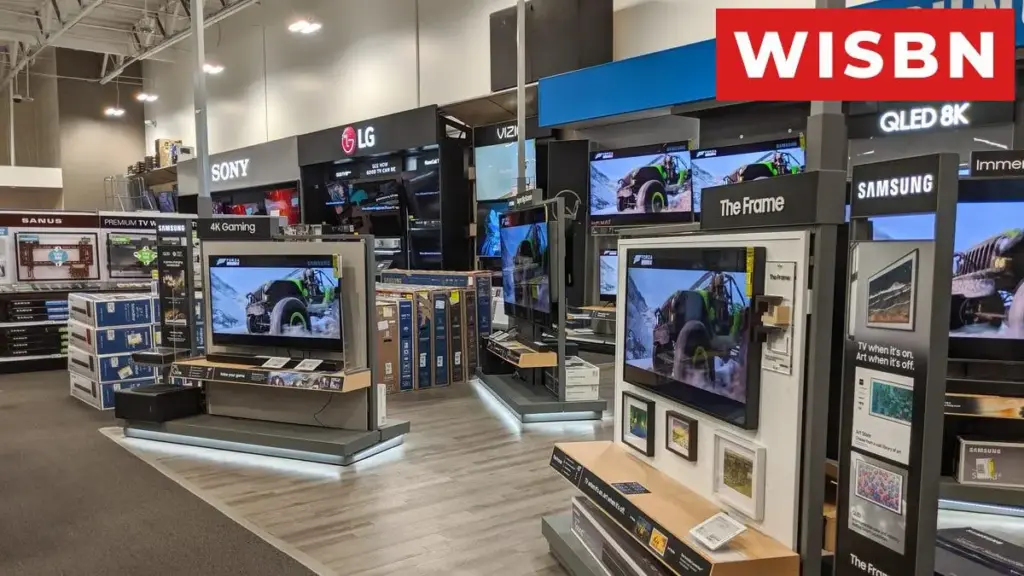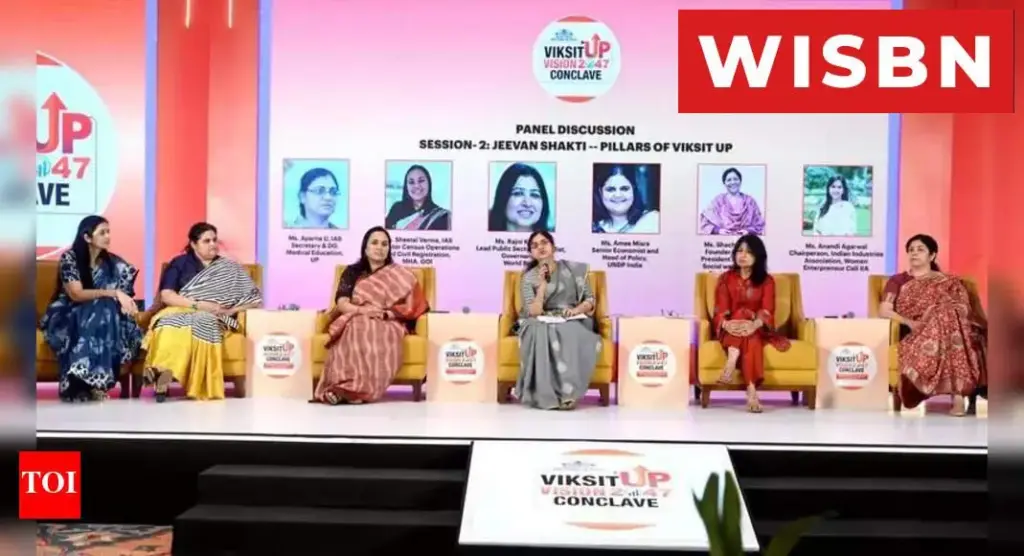On a weekend excursion with her family last year, Ms Charleen Phor found herself following behind her toddler as he enthusiastically wandered among the vibrant shophouses of yesteryear and clambered into a snug cargo hold at the Children’s Museum Singapore. In a gallery where little visitors were tracing the paths of early migrants, her son peered into a streetside barbershop and tried a multimedia game that let him clean a digital Singapore river.
“I like the very open concept, where the children can explore at their own time and realise, ‘This is where I want to park myself’,” said Ms Phor, a programmes lead in her early 40s who has visited the museum at Coleman Street three times since its opening in 2022.
One of the freshest entrants to the local museum landscape, the Children’s Museum Singapore – previously the Singapore Philatelic Museum – is also the first here devoted to children aged 12 and under. Contrary to notions of these venues as solemn repositories of artefacts where visitors must observe constant unspoken decorum, the museum Ms Phor toured was alive with lively chatter and featured hands-on displays to climb on, look at and touch.
For her, museums are not merely a location for a pleasant outing but a way to foster bonds across generations and hand down knowledge that might otherwise fade. “Some of the toys and exhibits are things that we played with during our childhood. So visiting the museum is a very good opportunity for us to share with our kid, ‘This is what mum and dad used to play with’,” said Ms Phor.
Beyond this new kid on the block, museums across Singapore are shedding their staid image by embracing technology and broadening their programming. And the strategy seems effective: attendance at national museums and heritage institutions has climbed steadily over the past five years, peaking at more than 5.7 million in-person visits in 2024 – the highest on record since 2003.
In the past 15 years, Singapore has witnessed the launch and renewal of several museums, including the ArtScience Museum at Marina Bay Sands which opened in 2011, the National Gallery Singapore near City Hall MRT in 2015, and a new contemporary art venue in the Singapore Art Museum (SAM) at Tanjong Pagar Distripark in 2022.
Since relocating, SAM’s visitor numbers have risen by about 20 per cent, and the museum continues to enjoy strong backing from local audiences, particularly young people, followed by families, said Dr Eugene Tan, chief executive officer and director of SAM and the National Gallery Singapore.
Ms Chang Yueh Siang, an adjunct lecturer at NUS College and associate university curator at NUS Museum, said Singapore has been successful in cultivating home-grown professional expertise in the museum sector over the last two decades. “We’ve moved from the early days of taking on international blockbusters to building our own blockbuster exhibitions,” said Ms Chang, who pointed to the National Gallery’s City of Others: Asian Artists in Paris, 1920s-1940s as one such milestone show. It borrowed works from many private collections and presented Singaporean artists like Liu Kang and Georgette Chen within a broader international framework.
Beyond the rising number of museums and galleries, she credited the livelier museum scene to substantial government investment in audience development through outreach events such as the Singapore Night Festival and Singapore Heritage Festival. But while both visitors and guides welcome the buzz of new openings and the steady uptick in attendance, many also acknowledge a persistent question: Whether Singapore has genuinely fostered a museum-going culture that will last beyond the draw of novelty and blockbuster events – and what will be needed to keep that momentum going.
WHAT’S ON AT SINGAPORE’S MUSEUMS
Today, Singapore’s museum scene has developed into a lively mix of national art institutions, futuristic digital showcases and increasingly family-oriented venues. According to the Ministry of Culture, Community and Youth’s (MCCY) annual Singapore Cultural Statistics 2025 report, total in-person visitorship under the Museum Roundtable exceeded 9.3 million in 2024.
The Museum Roundtable – a network of over 60 public and private museums and heritage galleries, including institutions not run by the government – was set up by the National Heritage Board (NHB) in 1996 to foster a museum-going culture among Singaporeans and position museums as distinctive cultural destinations.
In 2024, some of the largest draws included the National Gallery Singapore, which recorded over 2 million visitors, the Singapore Art Museum which welcomed over 1.5 million people and the National Museum of Singapore, which surpassed 1 million visitors.
Some singled out the ArtScience Museum and the National Gallery Singapore, which celebrates its 10th year in 2025, as transformative for the local museum landscape. Professor Ute Meta Bauer, director of Nanyang Technological University’s (NTU) School of Art, Design and Media, said the Gallery’s opening in 2015 signalled a change in how art and culture are viewed in Singaporean society.
“As a prestigious, centrally located museum housing the largest collection of Southeast Asian modern art, alongside the Singapore Art Museum’s extensive collection of contemporary art from the region, it has had a significant educational and cultural impact,” said Prof Bauer. In Southeast Asia, only Manila now edges past Singapore in the number of public and private institutions devoted to art and culture, she added.
Dr Tan said the Gallery’s attendance has steadily risen over the past decade, and it has hosted over 14 million local and international visitors during this period. From April 2024 to March 2025, the Gallery saw an “even split” between local and foreign exhibition-goers.
Where the Gallery can showcase the strengths of Singapore’s national art collection, the ArtScience Museum’s success lies in its broad programming that draws varied audiences, said Ms Chang from NUS College. “Families will find teamLab’s Future World engaging, pop culture fans will find their exhibitions of manga art or anime design appealing. There are often exhibitions that engage with scientific or environmental themes that are thought-provoking,” she said.
Mr Adrian George, ArtScience Museum’s director of exhibitions, programmes and museum services, said the museum has curated shows that blend “immersive experiences with opportunities for dialogue and reflection” in step with museum-goers globally seeking more than static art displays. Over the past 15 years, it has mounted internationally acclaimed exhibitions featuring legendary figures like Leonardo da Vinci and Frida Kahlo while supporting local and regional artists. The ongoing SingaPop! 60 Years of Singapore Pop Culture created by Dick Lee, for instance, mixes interactive and multimedia installations to examine changing food, music, fashion and Singlish.
While the ArtScience Museum did not disclose its annual visitorship, Mr George said the permanent exhibition teamLab Future World has drawn more than 4.5 million visitors since it opened in 2016.
Ms Nur Aishah Sekimin, a 31-year-old document controller and frequent museum visitor said museums have become popular with parents for their indoor family-friendly activities. “Museums nowadays offer more digital exhibitions and they are more interactive as compared to my younger days, where we would stare at an exhibition and read the infographic provided. They even have maps or itineraries prepared (online) for the number of hours we have to spend in the museum,” said Ms Aishah. She visits museums three or more times a year with her two children. She said her son also raved about the Children’s Museum Singapore after going on a preschool outing.
Ms Mishelle Lim, a senior curator at the Children’s Museum Singapore, said its hands-on exhibits designed for play are part of the museum’s plan to be a “starter museum”, so children can have an initial positive encounter and be encouraged to explore other museums. “Ideally, it should not be just, ‘I’m not a museum-goer, it’s not for me’. We have to have very attractive programming in the first place to get them through the doors. And once they do, we see repeat visitors,” she said.
While Ms Lim grew up in a Singapore with fewer museums and conventional displays that invited hushed reverence, she wants the Children’s Museum Singapore to address weighty topics in a playful way. “We want the children to be themselves. And you know it’s good when the noise level is high,” she said.
That approach is evident in the museum’s current Into the Hawkerverse exhibition, where children can operate food stalls or try their hand at teh tarik-pulling in a digital game featuring a video of an actual stall owner – all aimed at fostering appreciation for the skill and labour behind Singapore’s hawker trade.
A MUSEUM-GOING CULTURE?
Mr Low Sze Wee, group director of museums at the NHB, said that its museums draw strong interest from Singaporeans and permanent residents, who commonly visit museums in groups with friends and family. NHB oversees the National Museum of Singapore, Asian Civilisations Museum (ACM) and Peranakan Museum, as well as three heritage institutions. Its subsidiary, HeritageSG, manages the Children’s Museum Singapore, Changi Chapel and Museum and Reflections at Bukit Chandu.
According to NHB’s Heritage Awareness Survey 2024, 94 per cent of respondents agreed that museums promote Singapore’s understanding of heritage, while 91 per cent agreed that museums help develop a better understanding of the country’s links to Asia and the world.
“We believe that making museums accessible is the foundation to building a museum-going culture. As such, our museums have offered free entry to their permanent galleries for Singaporeans and PRs for more than 10 years. As for paid offerings, Singaporeans can now enjoy greater access to these by using their SG Culture Pass,” said Mr Low. The culture pass for Singaporeans aged 18 and above comprises S$100 in credits that can be used to offset ticket purchases for arts and heritage programmes such as cultural performances, workshops and museum exhibitions.
At the Lee Kong Chian Natural History Museum, the only one of its kind in Singapore, visitorship has risen steadily, with a noticeable uptick in foreign visitors over the past two years. Located at the National University of Singapore (NUS), the museum’s regular visitors are mostly local students and families. It has engaged over 105,000 participants through various school-based educational programmes since its launch in 2015. Its flagship Singapore Biodiversity and Adaptation workshop, for example, involves over 4,000 Primary 6 students annually.
Beyond families and students, however, engagement levels at museums across Singapore seem less consistent. Mr Dhevarajan Devadas who runs Historyogi, a social media account on Singapore history and heritage, said a museum-going culture in Singapore is still a “work-in-progress” despite more engaging offerings. The 34-year-old public policy analyst said that high-profile and anniversary-related content tends to attract crowds, but more traditional history-focused museums seldom draw the same numbers.
Agreeing, Mr Muhammad Hafiz Rashid, who has volunteered with docent and guide group Museum Volunteers since 2013, said blockbuster exhibitions and festivals that are “Instagrammable” may bring more people through the door, but this does not guarantee repeat visits. While Singapore is slowly developing a museum-going culture, the 32-year-old freelance storyteller noted that regular museum-going remains fuelled by niche groups with specialised interests. “The typical, average Singaporean is usually (attracted to a museum) because of programming like the Singapore Night Festival. People want to see the lights or installations, and since you’re already there, then why not visit the museum.”
Mr Hafiz added that the concept and format of a museum is “very colonial” and therefore visiting may not be as customary in cultures outside Europe. “In a way, it seems like a very ‘atas’ (high-class) sort of thing. When people go for accessibility in entertainment, people go to amusement parks, libraries,” he said.
Still, having observed more students, Gen Zs and millennials walking museum corridors, Mr Hafiz said that early exposure via schools and child-friendly programming could make museums seem less foreign.
Mr Ng Wee Liang, a 26-year-old university student who posts about arts and heritage on social media, said permanent galleries remain appealing to tourists seeking historical context. However, locals like him gravitate towards eye-catching festivals or rotating contemporary shows that feel relatable. He pointed to crowd-pullers such as the 2022 Doraemon-themed exhibition at the National Museum and the Studio Ghibli showcase at ArtScience Museum that ran until early 2025.
Given that national museums are often free for Singaporeans and PRs, Mr Ng said cost is not the obstacle in developing a museum-going culture. “I think Singapore’s museums are actually managed well, but the perception has to be changed. Most people think museums are just artefacts, or words besides old things. But that’s not necessarily true, at least here,” he said.
Nonetheless, there are signs of change, as docents noted that beyond rising visitor numbers, there is also growing interest in volunteering with museums. Ms Garima Gemawat Lalwani, an American who has lived in Singapore for over two decades, has seen more Singaporeans join Friends of the Museums, a non-profit organisation that supports museums here with guiding services. When she began docent training in 2007, the organisation was mostly expatriates, but more Singaporeans have signed up in the past five to 10 years.
While this indicates increased public interest in museums, Ms Garima, a former president of Friends of the Museums, said she hopes more Singaporeans pay attention to museums that concentrate on local communities and their contributions to Singapore. “My hope is that people will visit not only the larger museums, but also places like Changi Chapel and Museum,” she said, noting that the latter is popular among many Australian and British tourists but remains less well-known among locals. The museum is dedicated to Singapore’s World War II history and recounts the stories of allied prisoners of war.
MORE SOPHISTICATED VISITORS
Accessibility is only part of the task in nurturing a museum-going culture. According to museum professionals, today’s audiences are more discerning than ever. To stand out in a crowded leisure market, museums must match the rising expectations of globally exposed locals and tourists who arrive with world-class standards.
Ms Lim from the Children’s Museum Singapore said that museum-goers have become more sophisticated with Singapore’s economic development and wider exposure to overseas attractions. This raises the bar for exhibitions, especially in their use of technology and nods to international pop culture.
Content creator Vins Too, 36, said that he is impressed by how Singapore’s museums have moved away from conventional, static-artefact displays and embraced digital projections and soundscapes that enable visitors to “step into a story”, but added they could push further. An overseas experience he recalled fondly is the teamLab Planets in Tokyo which he described as “pure play and immersion”. At that interactive art museum, visitors can walk through water with light projections, or sit in a mirrored room filled with flowers that appear to float in the air.
“I think Singapore’s museums could definitely adopt more of this playful and interactive spirit. While we’ve made great strides in using technology, integrating more of these large-scale, digitally-driven installations could attract even younger audiences and transform the museum visit into a truly memorable, multi-sensory adventure,” said Mr Too.
For Mr Ng the arts and culture content creator, one striking museum he visited is the Museum of Occupation in Riga, Latvia, where the layout of the former Soviet building was used to give visitors an immersive sense of the country’s history. Latvia was once part of the Soviet Union. “Signs are mounted on a fake electric fence, and when you keep walking and reading, the museum flow makes you go up to the second floor. When you look down, you see other visitors going in through the fenced-up area, and realise you’re (in the position of) prison guards who looked at prisoners walking in a line,” said Mr Ng.
Tourists who visited local museums told TODAY they generally found the offerings comparable to, or even surpassing, what they had seen abroad. Ms Tapasya Kawshik, a 42-year-old artist, and software developer Anurag Jaiswal, 42, who were visiting Singapore from India with their two children, said they found ArtScience to be an exciting and tech-forward blend for all ages. “It’s the first of a kind (for us). We haven’t visited a museum like this, where they mix art and science together,” said Mr Jaiswal. But the couple added that London’s Natural History and Science museums had larger collections with more in-depth explanations of the science behind exhibits.
Bulgarian tourists Rumen Velichkov, 25 and Ms Yoanna Yordanova, 26, also enjoyed visiting the ArtScience Museum during their four-day stop in Singapore despite initial worries that it might be “gimmicky”. Ms Yordanova, who works in marketing, said Bulgaria could learn from Singapore museums’ smooth user experience, noting she was impressed that she could buy tickets “in a matter of seconds”.
French retiree Andre Chambon, 72, appreciated how the National Gallery Singapore displayed artworks with more space between them than in France, though he wished there had been a French translation guide to help him navigate. He visited the Gallery and the ACM on the suggestion of a tourist guidebook, and discovered World War II interpretative centre Reflections at Bukit Chandu while on a walking route.
With the goal of drawing tourists and encouraging locals to return, experts said a careful balance must be struck between following global trends and foregrounding local culture and heritage.
Mr Devadas who runs Historyogi said he hopes Singapore’s museums might widen the range of stories they tell, including those that are “more complex or less often heard”. He pointed to the potential to feature more of Singapore’s pre-colonial history and the experiences of groups such as the Orang Laut. He also hopes that further efforts will be made to make content more accessible to people with visual and hearing impairments.
While it may be tempting to use national museums abroad as a yardstick for Singapore’s, Ms Chang from the NUS Museum said the city-state can also learn from university museums overseas which may operate with fewer resources but present engaging ways of showcasing living heritage and cultures. She cited how one university museum in Thailand lacked funds for an expanded gallery but partnered with a nature reserve to use onsite “living resources” such as various plant and animal species for display and teaching. “This was really inspiring, because we’re not just looking at specimens and objects that are inactive and static, but it is a ‘museum’ that is contextual and ‘alive’. Rather than specimens of fossils and skeletons behind glass shelves, we see them in their natural contexts,” said Ms Chang.
MUSEUMS OF THE FUTURE
As museums



